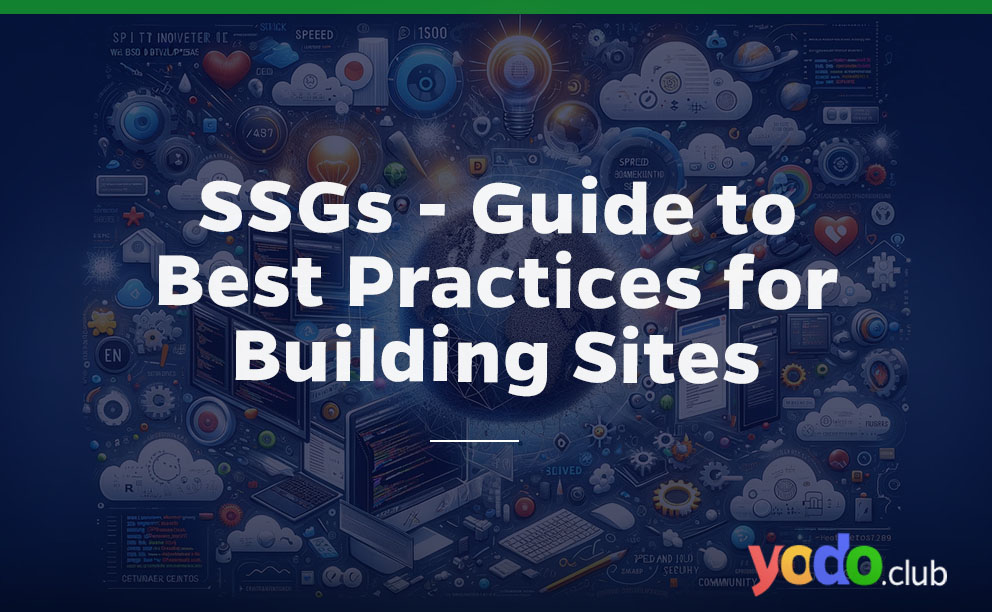The environmental impact of our digital activities is significant, with the digital industry responsible for 2-5% of global emissions, surpassing the aviation industry. This positions the internet as a crucial contributor to global pollution if considered a country. Eco-friendly web design emerges as a vital response, aiming to reduce the digital carbon footprint through sustainable practices. These practices lower energy consumption and emissions from websites and improve user experience and web service efficiency.
Table of Contents
The Pillars of Sustainable Web Design
User Experience and Accessibility
Eco-friendly web design prioritizes user experience and accessibility, significantly impacting energy efficiency. Utilizing alt texts for images enhances web accessibility for users with visual impairments or limited internet access, reducing the need to download image files and saving energy. Efficient website navigation, through intuitive architecture and clear menus, allows users to find information swiftly, minimizing energy use per visit by reducing the time spent on the site.
By focusing on these critical aspects, web designers can create more sustainable and user-friendly websites.
Efficient Use of Media
The website’s carbon footprint is significantly affected by its media content. Properly optimizing image and video formats is crucial for reducing data transfer and environmental impact. Choosing the correct format for images—JPEG for detailed photos, PNG for images requiring transparency, and GIF for simple animations—helps minimize file sizes without losing quality. SVGs are ideal for scalable illustrations due to their small file size, though they must be implemented with accessibility in mind.
Due to its large file size and streaming energy requirements, video content significantly contributes to a site’s carbon footprint. Utilizing hosting platforms like YouTube or Vimeo, which use efficient and renewable energy sources, can mitigate this. These platforms’ optimized delivery networks help lower energy demand. Moreover, employing efficient encoding techniques and restricting video content to only what is necessary can further reduce environmental impact.
Adhering to these media optimization strategies is vital for developers and designers to craft websites that are both user-friendly and environmentally sustainable.
Core Strategies for Eco-Friendly Development
Optimizing Web Assets
Effective web asset optimization is primary to lessening a website’s environmental footprint:
-
- Image Optimization: Selecting the appropriate image format and using compression tools like TinyPNG can significantly decrease data transfer without sacrificing quality, aiding energy conservation.
- Strategic Video Use: With the high energy demands of video streaming, choosing video content is essential. Utilizing platforms with green-energy data centres like YouTube or Vimeo can enhance delivery efficiency.
- Prioritize introductory videos and consider a lower resolution to reduce data usage.
- Lazy Loading: By loading media content only as needed, lazy loading can improve page load times and cut down on excessive data transfers, leading to energy savings.
Focusing on these strategies can significantly contribute to sustainable web development, aligning environmental responsibility with enhanced site performance and user experience.
Sustainable Web Hosting
Choosing an eco-friendly web hosting service is crucial for minimizing a website’s carbon footprint:
-
- Green Hosting Services: Select hosting providers that utilize renewable energy or offset carbon emissions. Providers like Google Cloud Platform and GreenGeeks harness renewable energy, lowering the carbon impact of server operations.
- Reducing Server Calls: Limiting server requests is essential for conserving energy. Employ strategies like content delivery optimization, reducing plugin use, and streamlining code to decrease server calls and enhance energy efficiency.
These approaches to web hosting are fundamental steps towards sustainable web development, effectively reducing the environmental impact while maintaining operational efficiency.
Advanced Techniques for Reducing Digital Footprint
CSS Sprites and Caching
Utilizing CSS Sprites consolidates multiple images into one, reducing HTTP requests, accelerating page loading, and lowering energy use by decreasing the amount of data transferred. Caching saves file copies, allowing faster site access for return visits by serving static content directly, thus significantly conserving energy by reducing server queries and data processing.
These methods improve site performance and align with sustainable web practices by minimizing the energy required for data transfer and processing, contributing to a reduced digital footprint.
Minimizing Cumulative Layout Shift (CLS)
Minimizing Cumulative Layout Shift (CLS) improves visual stability by preventing unexpected content shifts, enhancing user experience, and conserving energy by reducing the need for browsers to re-render pages. Setting fixed dimensions for media and other elements helps avoid these shifts, making web browsing smoother and less energy-intensive by minimizing recalculations and re-rendering processes.
This approach provides a better user experience and aligns with eco-friendly web practices by reducing unnecessary energy consumption.
Sustainable Design and Development Practices
Designing for Sustainability
Designing for sustainability in web development goes beyond aesthetic choices, focusing on user-friendly interfaces and features that encourage eco-friendly behavior. By embedding functionalities such as dark mode to lower screen energy use and prompts for energy-saving practices, web designs can actively contribute to environmental sustainability. These design choices enhance user experience and promote responsible energy consumption, reflecting a commitment to eco-conscious web usage.
Infrastructure and Hosting Considerations
Choosing eco-friendly web hosting and infrastructure is crucial for reducing a website’s carbon footprint. Green hosting providers, powered by renewable energy sources or committed to carbon neutrality, significantly lower a site’s emissions. Additionally, with its energy-efficient data centers and optimized resource use, cloud computing offers a scalable, more sustainable option for web development, thanks to large-scale investments in renewable energy and advanced cooling technologies.
These choices decrease environmental impact and align with sustainable web development practices.
Implementation and Continuous Improvement
Web Sustainability Guidelines
The World Wide Web Consortium (W3C) has established sustainability guidelines to steer web design and development toward eco-friendly practices. These guidelines offer a blueprint for developing digital products emphasizing environmental sustainability and user needs. Following these principles helps ensure projects contribute to global sustainability objectives, such as lowering energy use and carbon emissions while enhancing resource efficiency. Implementing W3C’s guidelines involves adopting efficient coding, responsible media handling, and green hosting practices, promoting a sustainable digital infrastructure.
Real-World Examples and Case Studies
Manoverboard and Mightybytes are notable examples of businesses that implement eco-friendly web practices. Manoverboard, a Certified B Corp, excels in accessible and energy-efficient web design. Mightybytes, also a B Corp, adheres to the Sustainable Web Manifesto principles, contributing part of its profits to environmental causes and using tools like Ecograder to enhance website sustainability.
Conclusion
Businesses can make significant strides toward eco-friendliness by adopting W3C’s guidelines, optimizing web assets, choosing green hosting, and continuously improving through regular audits. Let’s commit to these practices, ensuring our digital presence supports the planet’s well-being. For more insights, visit Ryte’s article on sustainable website designs.






 & Passion.
& Passion.